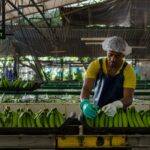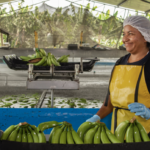Natural coatings found to increase mango shelf life

A study from Colombia has found that coatings based on natural elements can greatly increase mango shelf life while maintaining the fruit's texture, color and weight. 
The Universidad Nacional de Colombia research project involved developing a blend of cassava starch and citric pectin, in which fruits were submerged for two minutes and then stored a 11º C (51.8º F) and a relative humidity of 80%.
These types of coatings provide a semi-pervious barrier to the surface of the product that increases carbon dioxide and decreases oxygen levels, according to researcher Eliana María Estrada.
This allows for color, texture and weight to be preserved for a longer period of time, compared to the normal maturation time - between the sixth and tenth day.
"We chose mango because it is one of the main tropical fruits, and after the Andean blueberry it is the second most common flavor in fruit juices," Estrada said in a release.
108 mangos were used from the Antioquia Province weighing between 161 and 200 grams (5.7 and seven ounces).
Parameters assessed
Mangos were divided in three groups, with a coating applied to two of them and the one group as a control. The fruit was washed, disinfected and left to dry naturally in the air. Following that the coating was applied, left to dry, and then the mangoes were stored.
The parameters assessed up to day 12 in storage included measuring factors such as firmness, physiological weight loss, acidity percentage and color changes every three days.
They discovered weight loss to be 12% in the coated mangoes, compared with 16% in uncoated fruit.
They also determined that citric pectin coating slow the browning process and both substances help the fruit retain its firmness for longer.
"If we can extend the lifespan of these mangos for five more days which is exactly what we continue to explore, it will be very beneficial for the fruit industry because we reducing weight loss by 4% compared to unprotected fruit, which would mean saving 4 grams for every 100 grams of fruit," researcher Carlos Julio Márquez said.
Photo: www.shutterstock.com










































